Exploring Music
My kids had such a blast last week with our Bedknobs and Broomsticks learning experiences. For the socials studies piece the girls were invited to make some sort of store. My 6 year old decided to make a music store and became very interested in music and musical instruments, so I decided to do an extension of some of those activities. Here is what I came up with.
Water Cups: How Does The Level of Water Affect Sound?
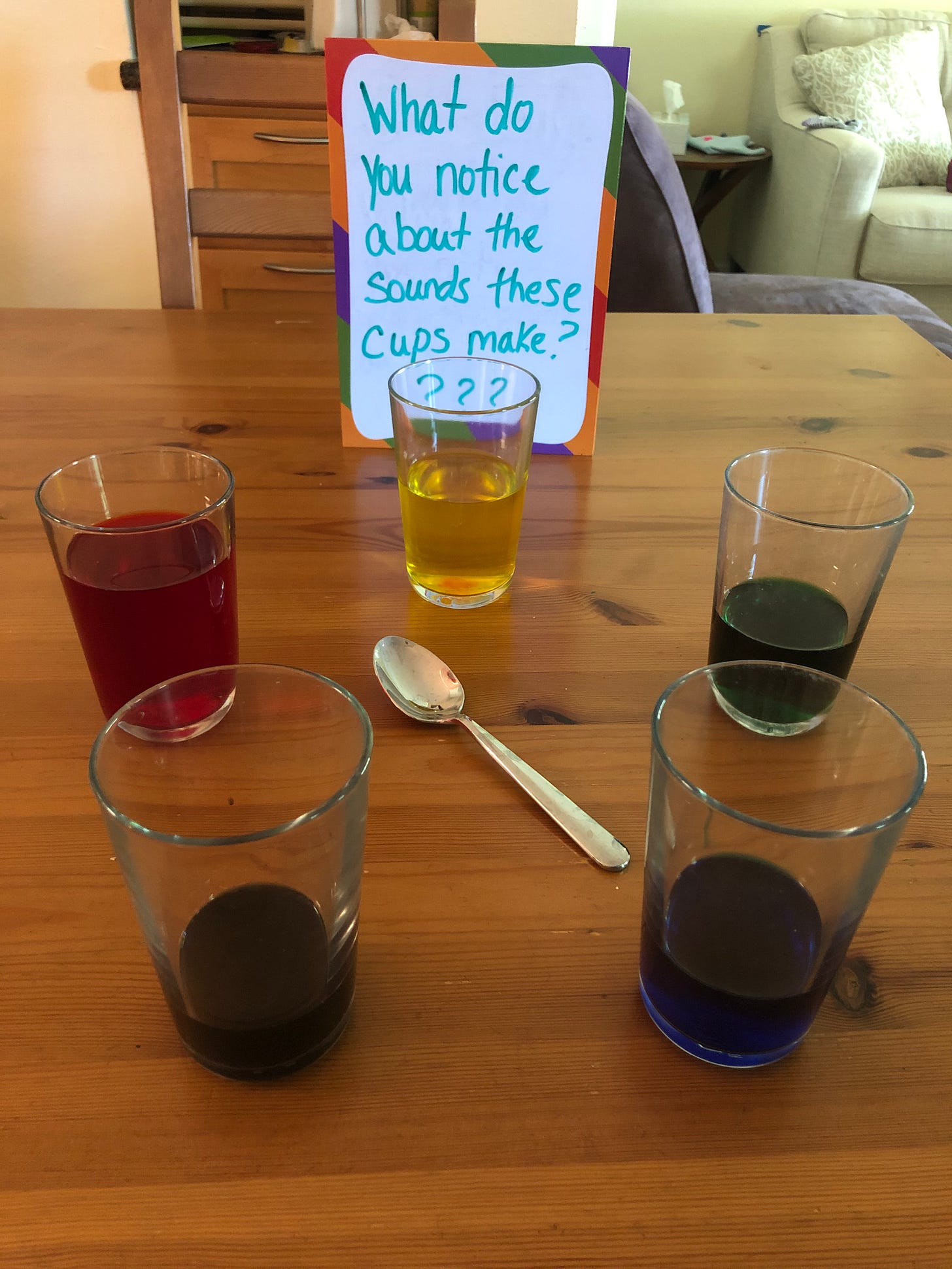
I filled five glasses of water with different levels of water. I used food dye to showcase the differences in water levels. I invited my girls to explore. They discovered that the higher the water level, the lower the sound, and the lower the water level, the higher the sound.
Sound Vibrations
Have your children put their hands on their throats and say something. Your child should be able to feel vibrations coming from the throat. Now have your child whisper that same thing. No vibrations! Interesting! Our vocal chords are like a stringed instrument. Vibrations are responsible for sound. Here is a fun video that talks about sound vibrations in music. If you happen to have a tuning fork at home, try this fun experiment: Take a pie pan and fill it with water. Hit the tuning fork against your hand and then place it in the water. You will see the vibrations make ripples in the water.
Peter and The Wolf: Listening for Different Instruments
This is such a soothing activity. I had my children listen to Peter and The Wolf. For those of you who aren’t familiar with this story, it is composed by Sergei Prokofiev. The story tells of Peter, who is hunting a wolf. There are several other animals depicted in the story, as well. Each animal is represented by a different instrument (flute, oboe, clarinet, etc.). My favorite version is the one narrated by David Bowie. You can find it on Spotify, Apple Music, Youtube Music, and Google Play Music. Encourage your children to listen to the story and notice the differences and similarities between the instruments. Which ones make high sounds? Which make low sounds? How do the wind instruments sound different than the brass instruments?
Composers and Art
Antonio Vivaldi and the Seasons
There are several composers who have composed music to familiar themes that children can enjoy. Check out Antonio Vivaldi’s four compositions of summer, winter, fall, and spring. Have your child listen to each one. You could listen to a different one each day (I don't suggest doing them all at once, instead spread them out). Encourage them to dance and make movements to the music that remind them of the seasons. You can provide scarves for them to dance and move with. Then give them some art materials- watercolor, finger paint, oil pastels, markers, whatever you’d like. Have them draw the characteristics of the season that they hear in each composition. It’s amazing what your kids will come up with!
Gustav Holst and The Planets
If your child is interested in space, these compositions are great! Gustav Holst did a different composition for each of the planets. Play the songs and encourage your child to move. Again, as with the previous exercise, give you child art supplies to represent the sounds heard in the music. Clay would be a great addition to the art supplies so that your child can sculpt the planet represented in the music.
Arthur Bliss and A Colour Symphony
Arthur Bliss created movements for four different colors; purple, red, blue, and green. Listen to the moments over the course of a few days. When you listen to one, let your child move. What does this color make them feel? Give your child art materials of all one color to express the sounds heard. For example, when listening to “Green”, give green colored pencils, markers, watercolor, pens, crayons, and/or watercolor. Encourage your child to notice all the different hues and shades in the color green.
Here is my daughter’s work after listening to the Green movement. She thought of a garden, a bug that is crawling, and one part she thought was scary (a crescendo) so she drew a bad guy behind the green construction paper door.
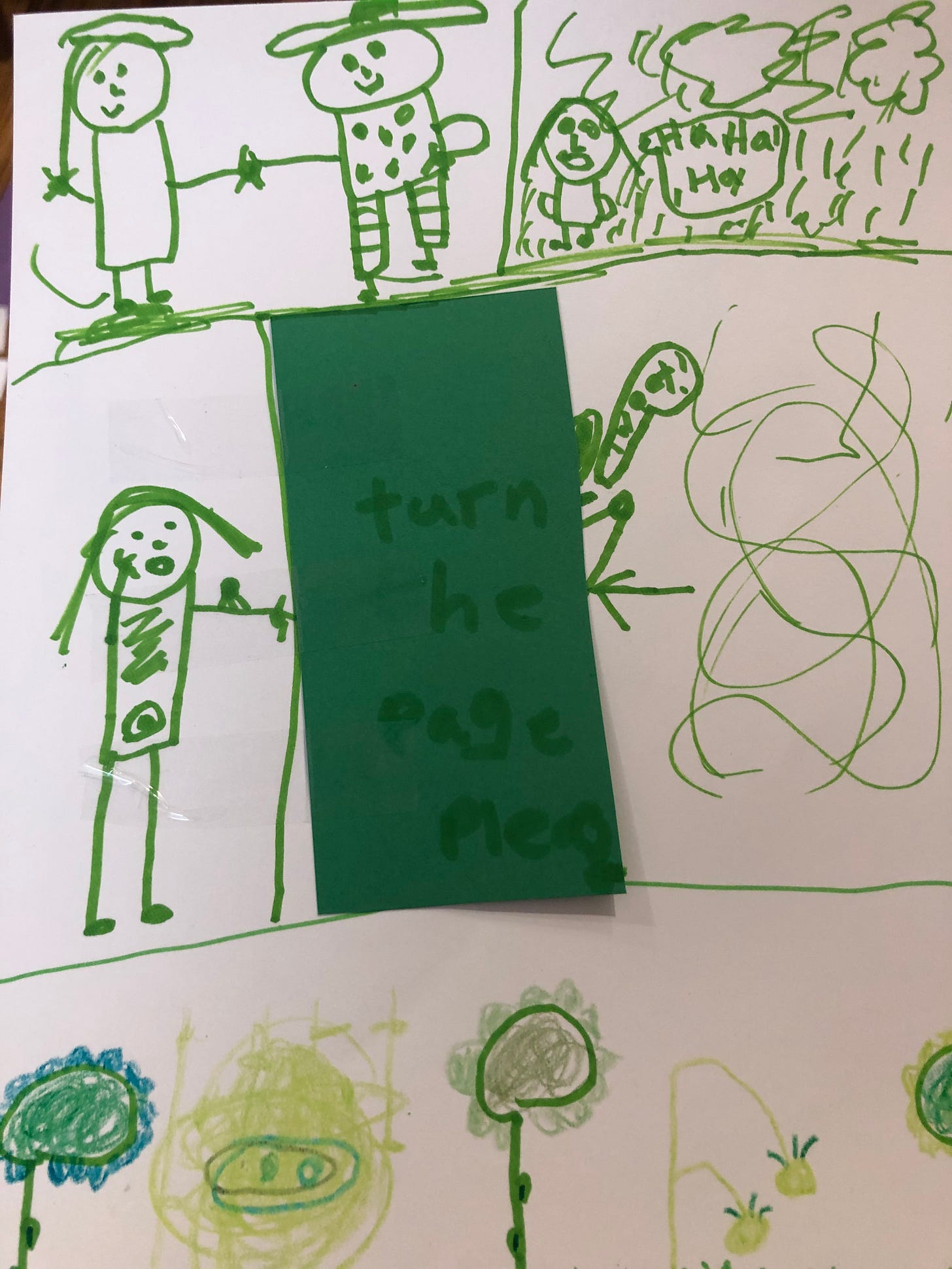
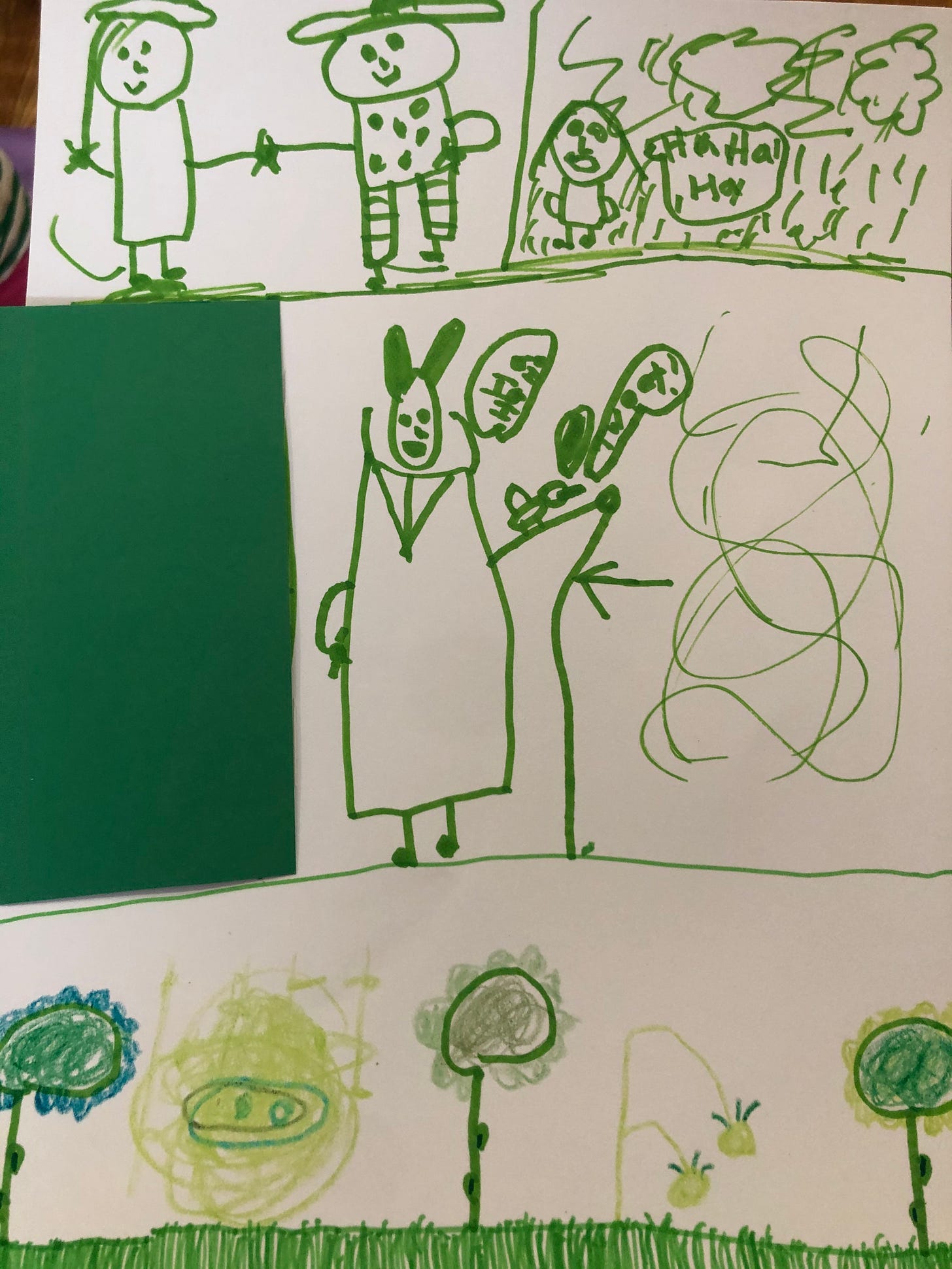
Music Note Math
My daughter started taking piano lessons within the last few months (we’ve been on a hiatus since Sheltering In Place started in California) and one of her earliest lessons was about music notes and how many counts each music note gets. I made two card games- one in which she needs to match the card to its number of notes and another where she uses music notes and a stanza. She needs to make each section of the measure add up to 4 counts. Four is the magic number! So, for example, she could use one whole note, two half notes, four quarter notes, or a combination of them, like a half note and two quarter notes or a dotted half note and a quarter note. If your child is at all interested in music and plays an instrument, or may be interested in playing an instrument some day, this is a great activity to try.
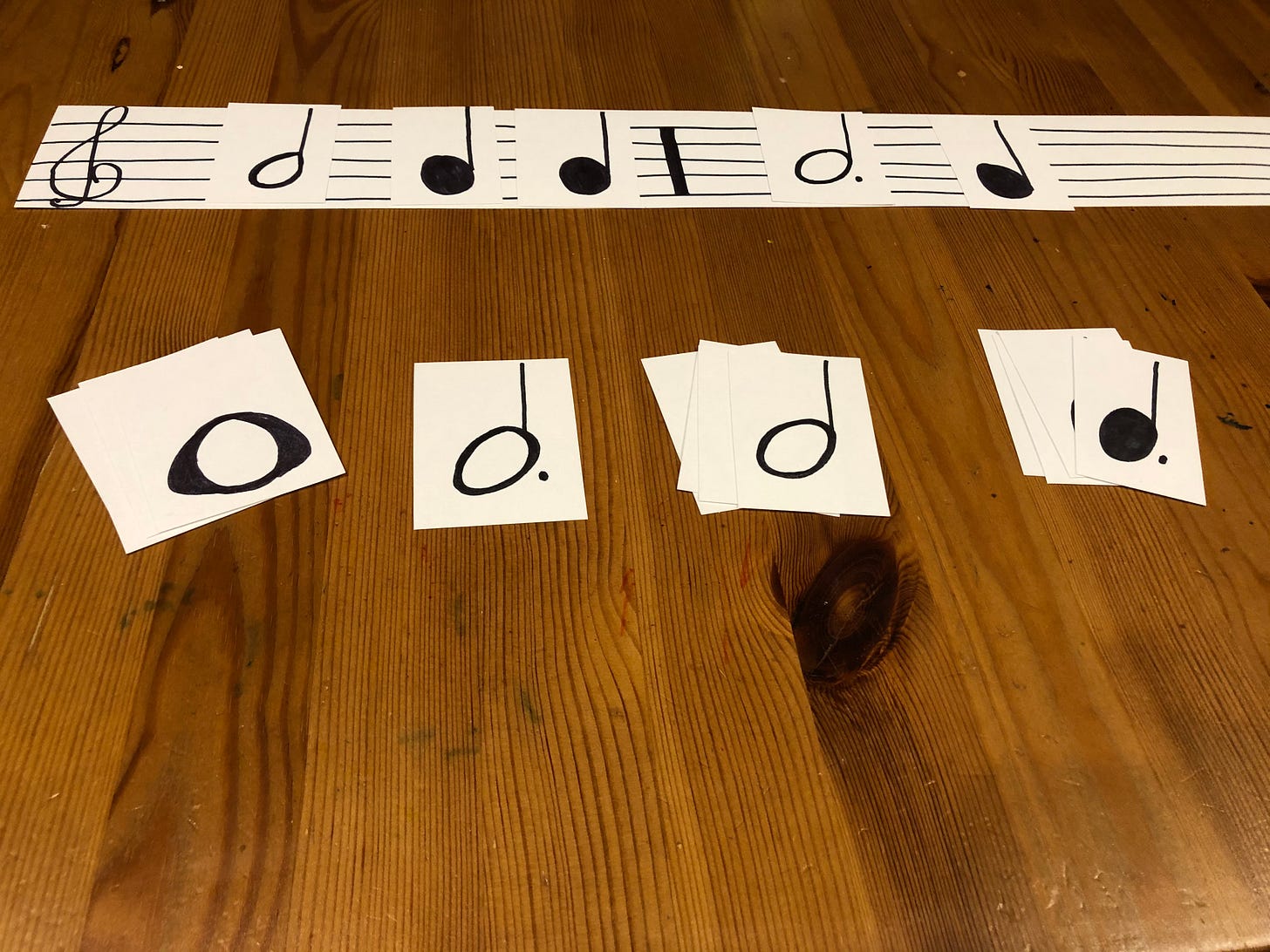
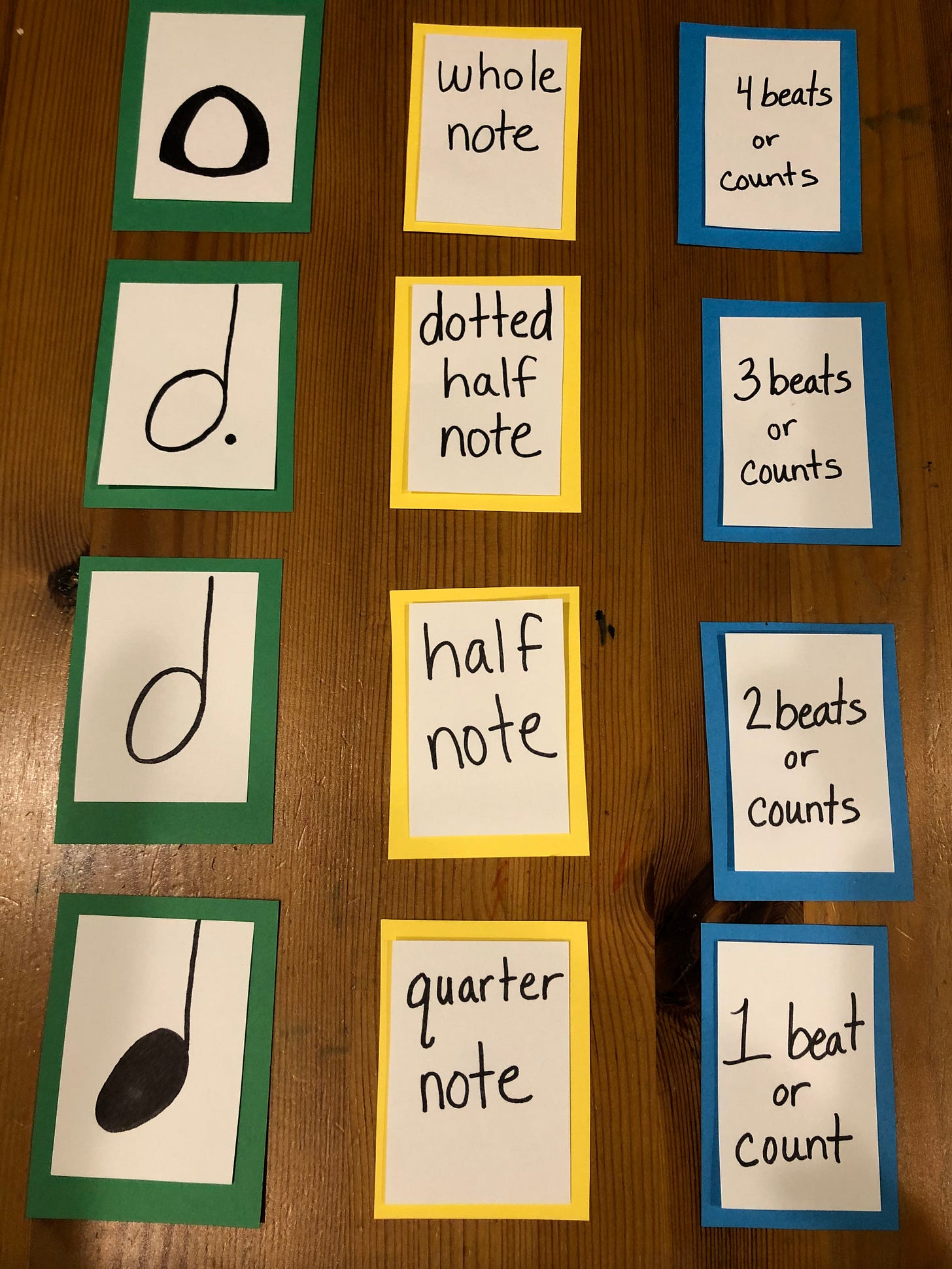
Making Instruments
Last week my daughter made a bunch of little fake instruments for her store. This time I encouraged her to make instruments that actually made sounds. How do they make the sound? What did she use to make the sound? What does she notice? My youngest one made a drum and my older one made a maraca. I also encouraged them to make guitars or harps out of shoe boxes and rubber bands. My daughter enjoyed making her own, but this is a great video on how to make a guitar out of a cereal box. We explored the sound the rubber bands made when we plunked them. What did they notice? Did the tightness of the rubber band make a difference in sound? The size of the rubber bands? What about the placement? What about if we used string? Did it make a difference in the sound?
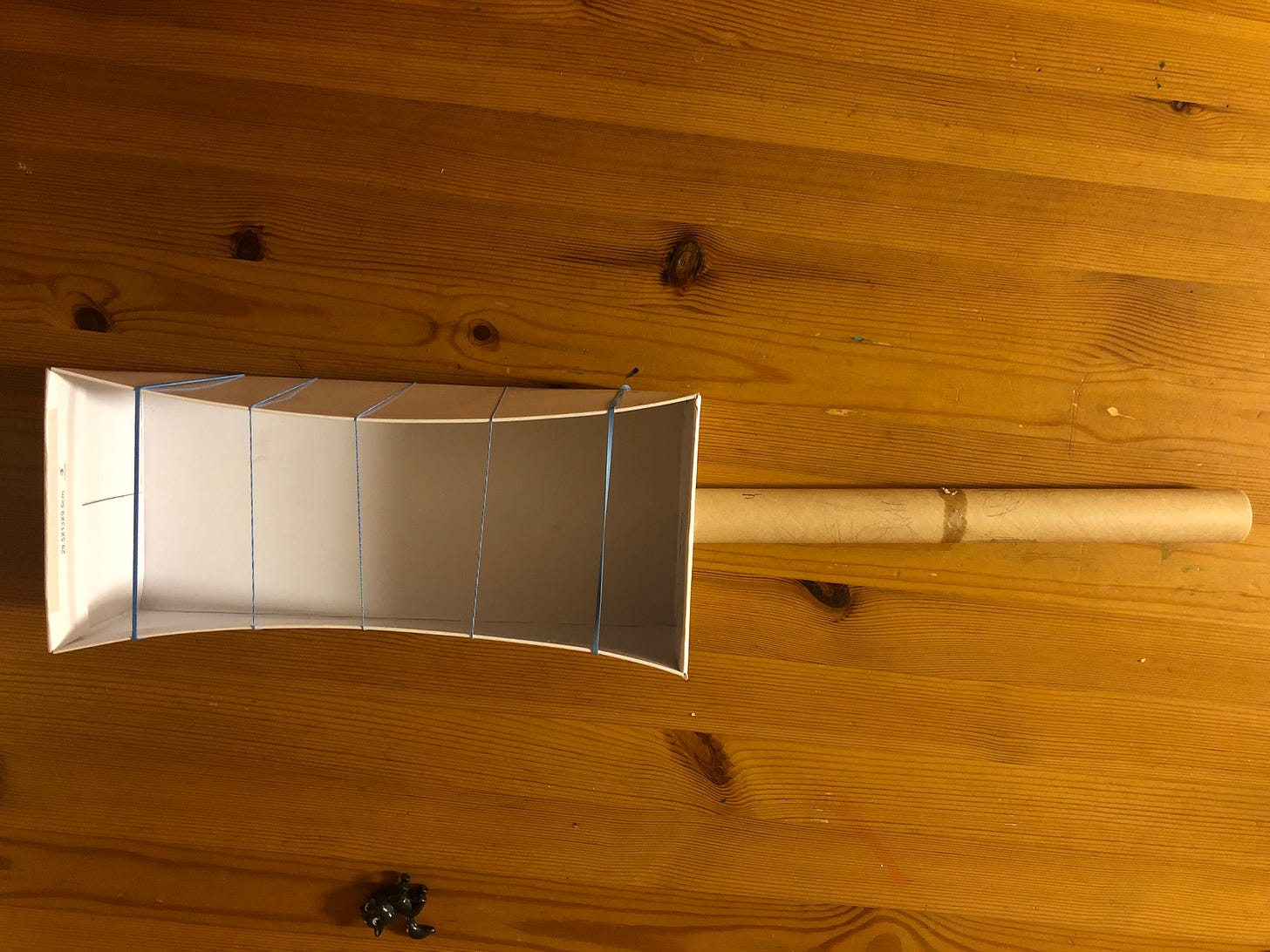
If your children enjoy music, I urge you to try a few of these activities. Make some noise!
~Nicole
